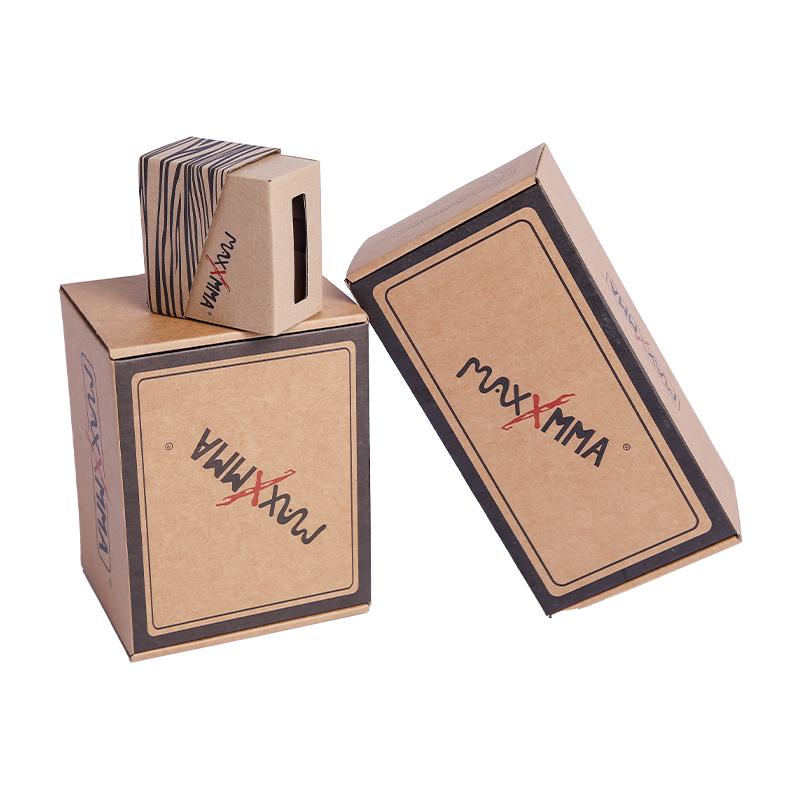-
 +86-0557-3781111 / +86-0571-56396277
+86-0557-3781111 / +86-0571-56396277
 +86-0557-3781111 / +86-0571-56396277
+86-0557-3781111 / +86-0571-56396277
Cardboard display boxes are essential for product presentation in retail settings, but they often face structural challenges when subjected to heavy loads, prolonged use, and frequent handling. Over time, issues such as warping, sagging, buckling, or collapse can arise due to material limitations or poor design choices. However, strategic design modifications can significantly enhance their load-bearing capacity, durability, and overall stability, ensuring a longer lifespan and maintaining product presentation quality. Below are key modifications that can be implemented to strengthen the structural integrity of cardboard display boxes.
1. Reinforced Structural Elements for Improved Strength
One of the most effective ways to enhance the load-bearing capacity of a cardboard display box is to reinforce its structural components. This includes the walls, base, and support elements.
A. Multi-Layered Construction
Instead of using a single-wall corrugated board, opting for double-walled or triple-walled corrugated panels significantly increases compression strength.
This prevents bending, collapsing, or tearing when subjected to heavy product loads, especially in multi-tiered or freestanding display units.
Using BC-flute or EB-flute corrugated board combines high stacking strength with a smooth printable surface, making it ideal for both durability and branding.
B. Internal Support Structures
Bracing Inserts or Vertical Dividers: Internal partitions distribute weight evenly, reducing pressure on individual panels and preventing sagging.
Cross-Braced Reinforcements: Diagonal or interlocking cardboard braces improve stability and prevent lateral movement.
Stacking Columns or Load-Bearing Strips: Reinforcing corner areas with thicker material or additional supports can enhance overall strength without significantly increasing material costs.
C. Strengthened Base and Load Distribution
The bottom panel should be reinforced with an extra layer of cardboard or designed with fold-over flaps that create a double-thickness structure.
Raised or honeycomb base designs provide added support and prevent sagging under heavy product loads.
Some designs incorporate hidden plastic or wooden reinforcements to further improve long-term weight-bearing capacity.
2. Optimized Folding, Slot, and Tab Design
The way a display box is folded and assembled affects its load distribution and overall durability. Poorly designed folds or misaligned slots can lead to weak points, causing premature failure.
A. Precision Scoring for Clean Folding
When cardboard is improperly scored, it can crack, weaken, or fold inconsistently, compromising the structural integrity of the display box.
Deep, even creasing ensures that fold lines remain strong and allow for easy assembly without damaging the material.
Micro-perforation techniques can help in creating pre-folded lines without reducing the load-bearing strength of the panel.
B. Secure Interlocking Tab Systems
Self-locking slots and tab-and-slot mechanisms improve stability by allowing panels to fit tightly together without adhesives.
A well-designed locking structure prevents shifting and ensures that the display maintains its shape even under continuous weight stress.
For added strength, some designs use multiple-layer locking tabs, which provide reinforcement in high-stress areas.
C. Avoiding Weak Angles
Sharp right angles often become failure points where stress builds up, leading to tears or bending.
Using angled or rounded edges in critical areas can distribute stress more evenly, improving the display’s ability to handle load pressure without damage.
3. Material Selection and Protective Coatings
Selecting the right type of cardboard and applying protective coatings can significantly enhance the display box’s resistance to wear, tear, and environmental factors.
A. Higher-Grade Corrugated Board
The choice of corrugated flute size (such as E-flute, B-flute, or C-flute) determines stiffness, compression strength, and shock absorption.
E-flute is thin but offers excellent printability, while B-flute provides a balance of strength and visual appeal.
BC-flute (double wall) combines the advantages of B and C-flutes, making it a great option for heavy-duty display applications.
B. Moisture-Resistant Coatings
Retail environments expose display boxes to humidity, spills, and general wear. Water-resistant coatings help prevent warping and softening.

Wax coatings, PE laminations, or aqueous varnishes improve durability and help maintain structural integrity over time.
C. Surface Treatments for Additional Protection
Anti-slip coatings prevent products from shifting, ensuring even weight distribution and reducing strain on weaker sections.
UV coatings and protective laminates provide resistance against dust, scratches, and fading, keeping the display visually appealing for longer periods.
4. Weight Distribution and Load Optimization
The way products are placed in a display box can gre
atly influence its structural performance. A well-balanced design helps prevent issues such as tipping, bending, or collapsing.
A. Balanced Product Placement
The heaviest items should be placed at the bottom to lower the center of gravity and improve overall stability.
Uneven weight distribution can lead to localized stress points, causing buckling or tilting of the display over time.
B. Multi-Tiered Shelving with Even Load Support
When designing tiered cardboard displays, using additional vertical supports between shelves prevents shelf sagging.
Angled shelves allow for better weight distribution while improving product visibility and accessibility.
C. Tapered or Angled Sidewalls
Instead of using completely vertical sidewalls, incorporating a slight inward angle redirects force downward, reinforcing the box's structural stability.
5. Easy Assembly and Tool-Free Reinforcements
A. Pre-Folded Reinforcement Flaps
Including pre-folded support flaps in the design helps users assemble displays quickly without compromising stability.
B. Clip or Lock Mechanisms
Some designs include snap-fit joints or integrated locking clips, removing the need for adhesives while improving strength.
Annhiu Address: Yishan Road and Qingshengou Road Intersection, Suzhou Economic Development Zone, Anhui, China
Tel: +86-0557-3781111
E-mail: [email protected]
Hangzhou Address: Building 3, No.286, Renliang Road, Renhe Street, Yuhang District, Hangzhou, Zhejiang, China
Tel: +86-0571-56396277
E-mail: [email protected]
Copyright © Hangzhou Shengpin Packaging Co., Ltd. All Rights Reserved.
